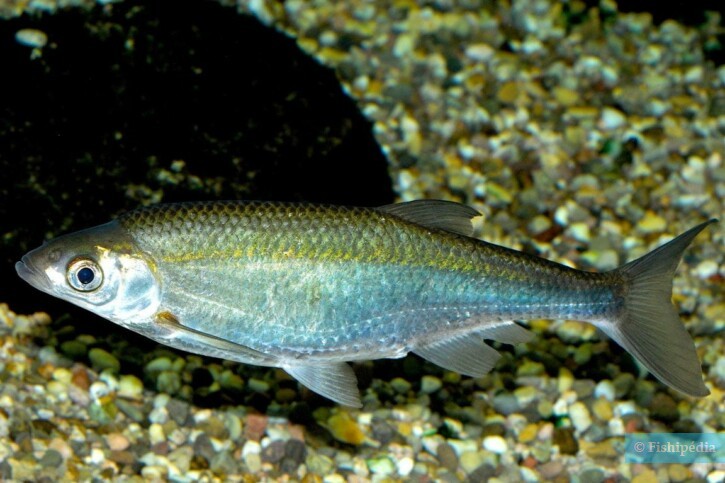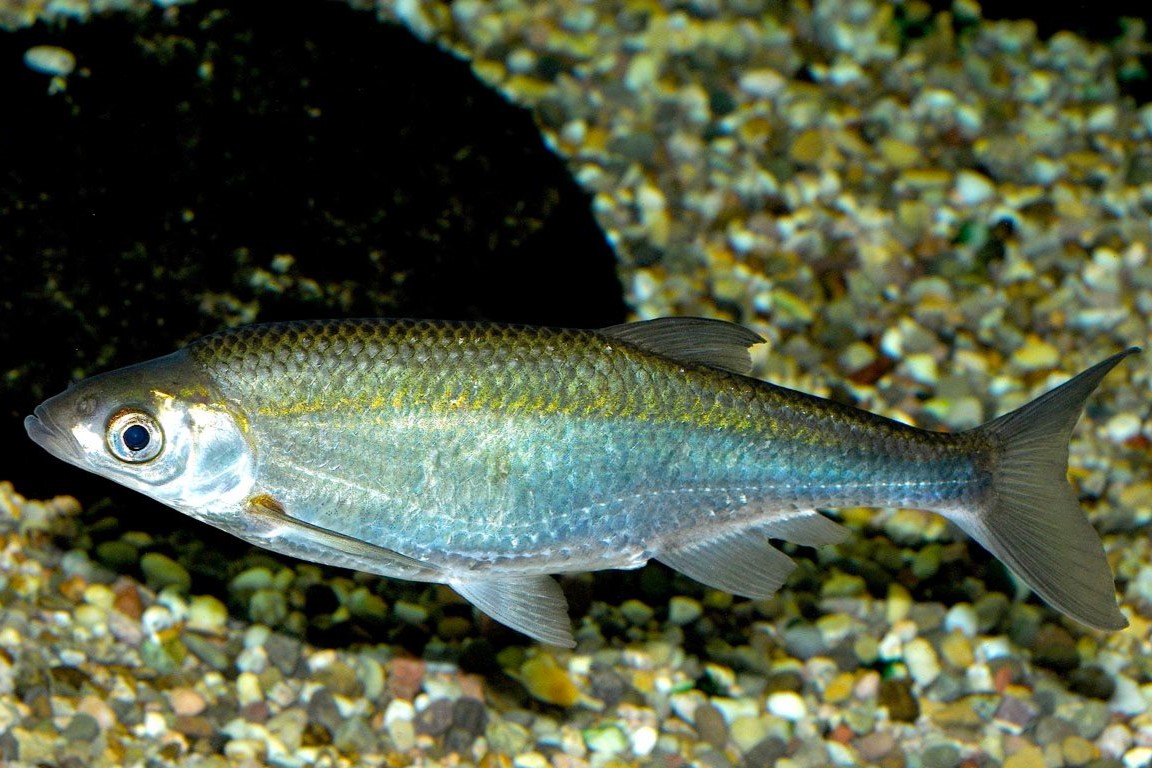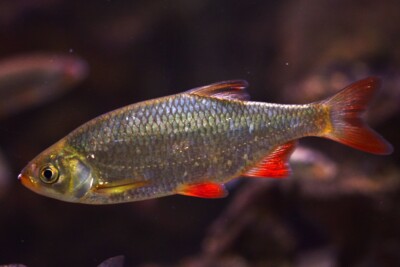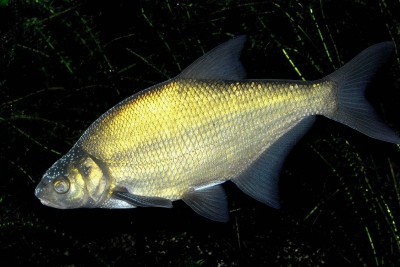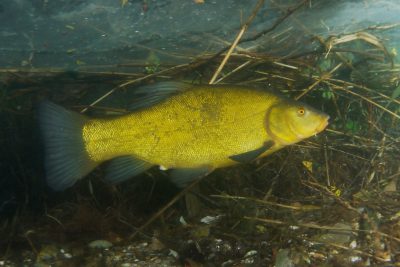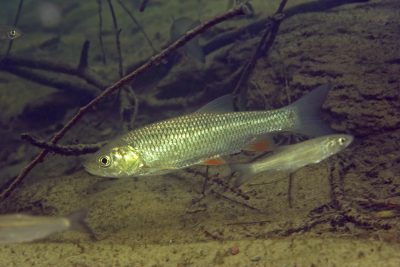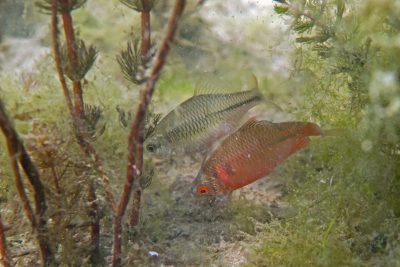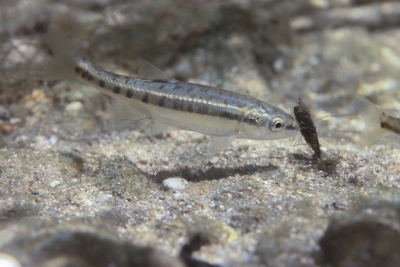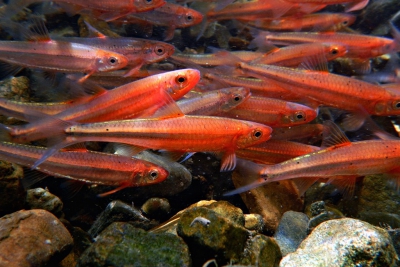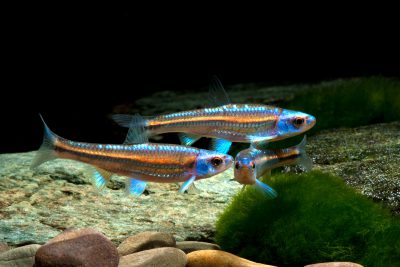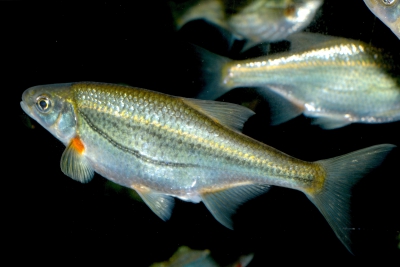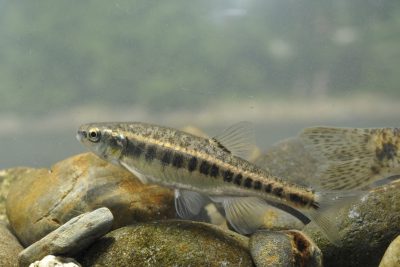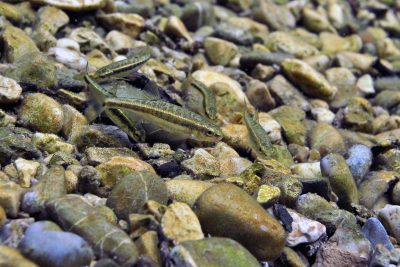Introduction
Alburnus alburnus, commonly known as the bleak, is a freshwater fish (temperate zone) native to Eurasia.
Who is it?
Morphology
-
Average size12 cm
-
Maximum size15 cm
-
Longevity15 year
-
ShapeOval
-
Average size12 cm
-
Maximum size15 cm
-
Longevity15 year
-
ShapeOval
How to recognize This fish ?
The bleak has an elongated body, a terminal mouth slanting upwards. Its scales are thin and ephemeral.
Its coloration is shiny with metallic reflections. Its back is green or blue, its paired and anal fins, yellowish or orangish.
Sexual dimorphism
Females have a more rounded abdomen than males, and are generally stouter.
Behaviour & Life cycle
-
dietcarnivorous
-
Sociabilityliving in shoals
-
territorialNo
-
Way of livingdiurnal
The bleak is a limnophilic and gregarious fish that naturally resides close to the surface. It is a species with a rather active temperament. Overall, it is an independent fish that doesn't pay much attention to other species.
It is zooplanktivorous and detritivorous, playing a fundamental ecological role in the food chain of predators.
Reproduction
-
Reproductionovipare qui pond sur substrat caché
The bleak is an oviparous fish that spawns on concealed substrates.
Reproduction occurs from April to August after a massive migration to spawning grounds at a temperature of 12°C to 18°C. The spawning is fractionated, at 1 or 2 weeks intervals, with 2 to 4, sometimes 6, batches. Initially photophobic, the fry rise to the surface when they reach 5 or 6 mm.
Harmless species
This species does not represent any particular threats to humans when encountered in its natural environment.
Origin and distribution
Geographic distribution & Conservation
-
Invasive speciesYes
This small, gregarious species inhabits a wide variety of aquatic environments, from slow-flowing rivers to lakes and reservoirs, up to altitudes of 1,800 meters. Highly tolerant of fluctuations in oxygen levels, temperature, and degraded habitats, it is omnivorous and adapts its diet to available food sources. It reproduces in spring and summer, often in temporarily flooded areas, and has high fecundity. It is naturally found in Central and Eastern Europe but has become invasive in several regions, particularly the Iberian Peninsula, where it threatens native species through competition, hybridization, and habitat degradation.
Conservation status of populations (IUCN)
What is its habitat?
Natural environment characteristics
-
Temperature10 - 20 °C
-
pH (acidity)7 - 7.5
-
gh (hardness)6 - 10
-
FlowSlow and Stagnant
Biotope presentation
The bleak naturally resides in neutral water. It is common in slow-moving waters of lower river sections, canals, lakes, gravel pits, and reservoirs.
It is fairly tolerant to organic pollution and high temperatures (thermal discharges). The substrate is generally made of rocks, humus, and mud.
Species of the same biotope
To go further
Sources & Contributions
Participation & Validation
The Fishipedia team and specialist contributors are committed to providing high-quality content. However, although the information comes from scientific sources or testimonials from specialists, the cards may contain inaccuracies.

Patrick Chartrer

Benoit Chartrer
Translation
Translation done with the valuable contribution of our translators, who make this information available to a wider audience. We sincerely thank them for their commitment.

Marine Kassel
Bibliographic references
- - GBIF
- - Les Poissons d'eau douce de France - Eric Feunteun - Jean Allardi - Philippe Keith - Biotope Edition - 2011. Collection Inventaires & Biodiversité, publication scientifique du Muséum
